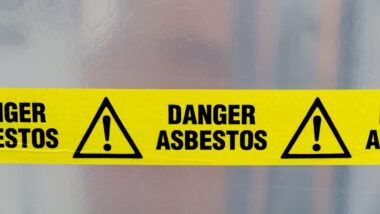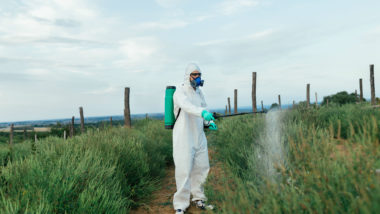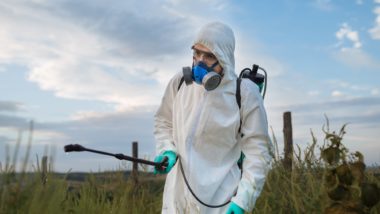Top Class Actions’s website and social media posts use affiliate links. If you make a purchase using such links, we may receive a commission, but it will not result in any additional charges to you. Please review our Affiliate Link Disclosure for more information.
Every job carries some level of risk, but due to the kinds of work and exposure to materials on the railroad, employees working in related occupations should be aware of the potential for developing cancer.
What Railroad Jobs Could Lead to Cancer?
The railroads move 1.6 billion tons of freight and more than 30 million people across the U.S. This system relies on workers who put their lives at risk in terms of workplace injuries and illnesses.
Many types of employees are at risk of getting cancer on the railroad after working in and around these machines and engine parts. This includes trackmen, sheet metal workers, pipefitters, yardmasters, firemen, conductors, and other workers on the railroad.
What Causes Cancer on the Railroad?
There are four leading causes of cancer on the railroad, all of which can expose workers to serious medical conditions and treatments. These are asbestos, silica dust, solvents, and exhaust from diesel locomotives.
Silica sand is used to keep traction on the tracks and is also found in the gravel spread near the railroad bed.
Exposure to the chemical creosote can also cause cancer. Creosote is a wood preservative known for potentially hazardous side effects, including cancer. Usually, exposure to creosote is not in high concentrations—but low levels of exposure over a long period of time still place people at an increased risk of developing creosote-related cancer.
 How Are Railroad Workers at Risk of Asbestos Exposure?
How Are Railroad Workers at Risk of Asbestos Exposure?
Asbestos is one of the leading causes of workplace-related cancer. Asbestos can be found in many different places with railroad work like electrical panels, pipe insulation, and brake shoe lining.
Although asbestos fibers may not pose a threat to humans if they are intact, when these fibers crumble they may release small particles into the air. When these microscopic particles are inhaled or ingested, they may settle in the lungs or abdomen, causing irritation and inflammation. Over years or decades, these particles may lead to cancers including mesothelioma or lung cancer.
Symptoms of asbestos-related cancer may include abdominal pain and swelling, chest pain, shortness of breath, fatigue, persistent cough, loss of appetite, or nausea. Unfortunately, many of these symptoms do not develop until the cancer is already in late stages.
Asbestos is a material that might not cause issues at the time of the person’s first contact. Rather, it’s continuous and repeated exposure to asbestos that causes a person to get cancer.
Why is Diesel Exhaust an Issue?
Diesel exhaust creates and releases a toxin known as benzene. This chemical is a colorless and extremely flammable liquid that smells sweet. However, when inhaled, it may lead to dangerous health problems.
Benzene has been connected to lung cancer for years. Railroad workers who operate trains might inhale benzene over many years and ultimately develop lung cancer.
Symptoms of short term benzene exposure may include drowsiness, headaches, tremors, confusion, irregular heartbeat, or unconsciousness. Longer-term exposure to the chemical may result in damage to bone marrow, anemia, low white blood cell and blood platelet counts, and damage to the reproductive organs. Inhalation of benzene may also lead to tissue damage in the throat or lungs, vomiting, stomach irritation, or convulsions.
The release of any toxins like benzene or even fibers like asbestos can be very harmful to the human body, even if it takes years of exposure for it to turn into a serious medical problem.
What Kind of Cancer Can a Railroad Employee Get?
Any of the above-mentioned substances can lead to multiple kinds of cancer. A railroad worker diagnosed with any of the following conditions should consider talking with their doctor about whether or not the cancer was caused by railroad work.
Cancers connected to railroad work include multiple myeloma, colon, bladder, leukemia, mesothelioma, lung, throat, and kidney.
Other medical conditions can be caused by exposure to railroad work, too, such as COPD and asbestosis. The longer that a person is inhaling asbestos or silica dust, the greater their chances of getting sick.
However, it may be possible for some workers to reduce their exposure. Wearing proper protective equipment may be one way to protect workers from the dangers posed by asbestos and benzene inhalation. Wearing a mask and protective clothing while working in proximity to these carcinogens may also reduce the risk of getting cancer on the railroad as well as other health side effects.
What Happens if I Already Have Cancer?
It’s very possible that you may have worked in a railroad job for years in the past and only recently developed cancer. Don’t rule out the possibility that on-the-job exposure in the past is the cause. Many types of cancer take years, even decades, to emerge.
A growing number of railroad workers are coming forward after being diagnosed with various types of cancer, alleging the disease was caused by exposure to dangerous chemicals on the job. Employers have a legal responsibility to provide a safe working environment for workers and can be held liable for injuries sustained on the job. Under the Federal Employers Liability Act (FELA) it is the plaintiff’s responsibility to demonstrate the company’s fault (either willful or negligent) in causing the injury or injuries of the worker in question.
If you think that you may have grounds for a legal claim because of your workplace environment and recent cancer diagnosis, this information should be shared with an attorney to discuss your legal rights and next steps. Filing a lawsuit cannot take away the pain and suffering caused by a cancer diagnosis, nor can it bring a loved one back to life, but it can at least help to alleviate the financial burden incurred by medical expenses, lost wages, and more.
Filing a lawsuit can be a daunting prospect, so Top Class Actions has laid the groundwork by connecting you with an experienced attorney. Consulting an attorney can help you determine if you have a claim, navigate the complexities of litigation, and maximize your potential compensation.
Do YOU have a legal claim? Fill out the form on this page now for a free, immediate, and confidential case evaluation. The attorneys who work with Top Class Actions will contact you if you qualify to let you know if an individual railroad worker cancer lawsuit or class action lawsuit is best for you. [In general, railroad worker cancer lawsuits are filed individually by each plaintiff and are not class actions.] Hurry — statutes of limitations may apply.
ATTORNEY ADVERTISING
Top Class Actions is a Proud Member of the American Bar Association
LEGAL INFORMATION IS NOT LEGAL ADVICE
Top Class Actions Legal Statement
©2008 – 2024 Top Class Actions® LLC
Various Trademarks held by their respective owners
This website is not intended for viewing or usage by European Union citizens.
Get Help – It’s Free
Join a Free Railroad Worker Cancer Class Action Lawsuit Investigation
If you qualify, an attorney will contact you to discuss the details of your potential case at no charge to you.
PLEASE NOTE: If you want to participate in this investigation, it is imperative that you reply to the law firm if they call or email you. Failing to do so may result in you not getting signed up as a client or getting you dropped as a client.
E-mail any problems with this form to:
Questions@TopClassActions.com.
Oops! We could not locate your form.


 How Are Railroad Workers at Risk of Asbestos Exposure?
How Are Railroad Workers at Risk of Asbestos Exposure?










